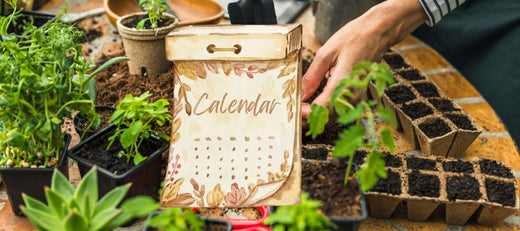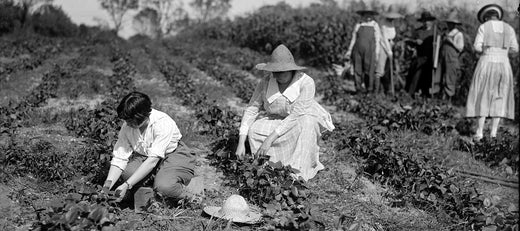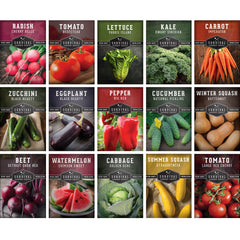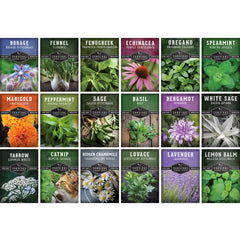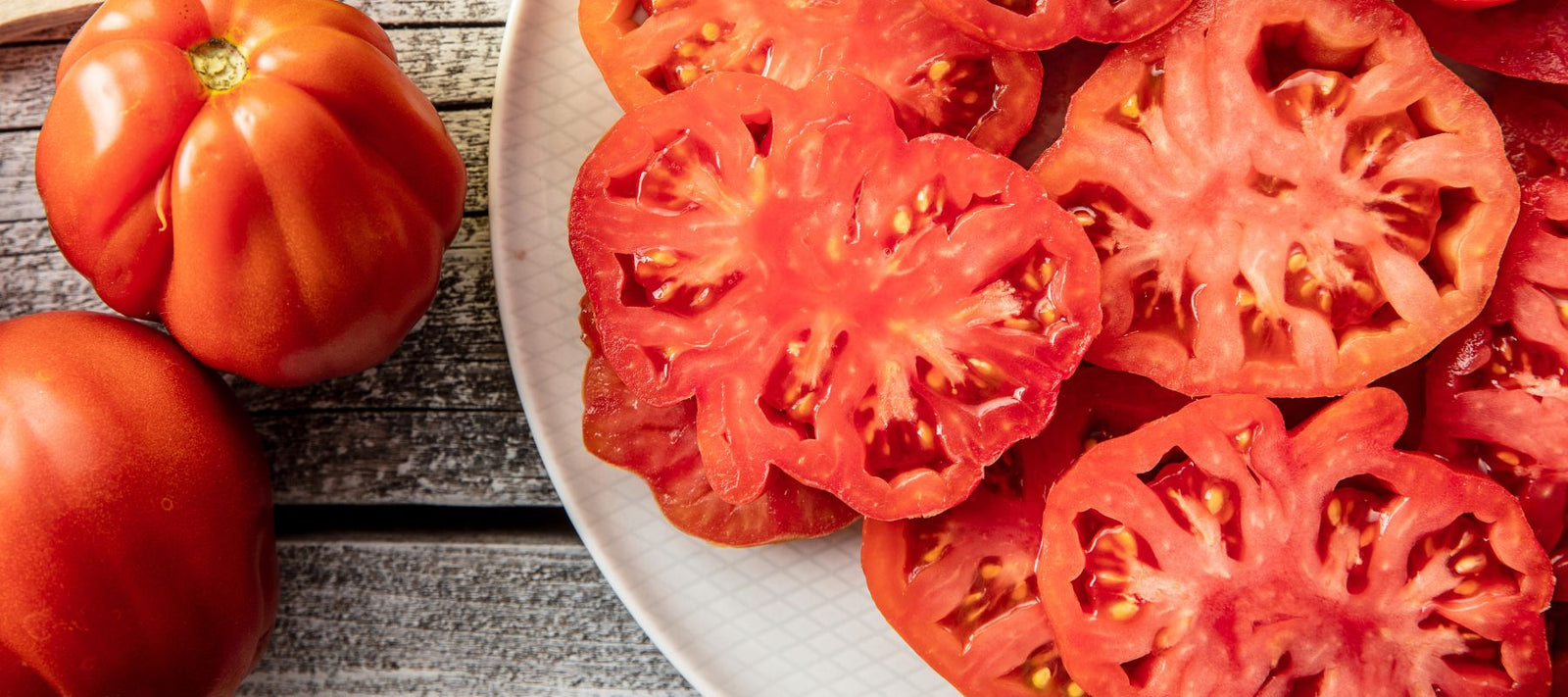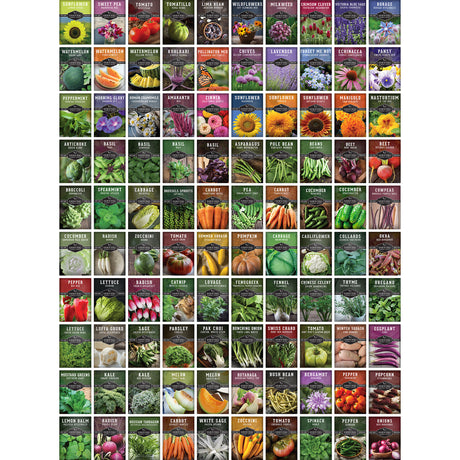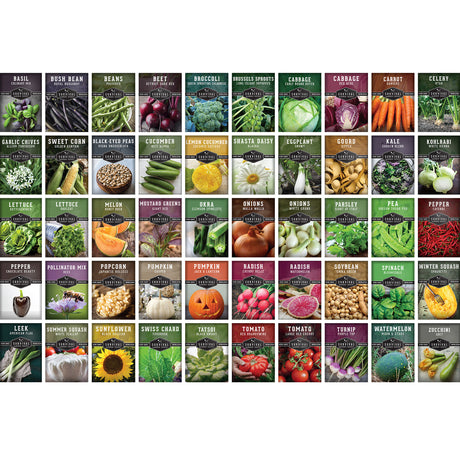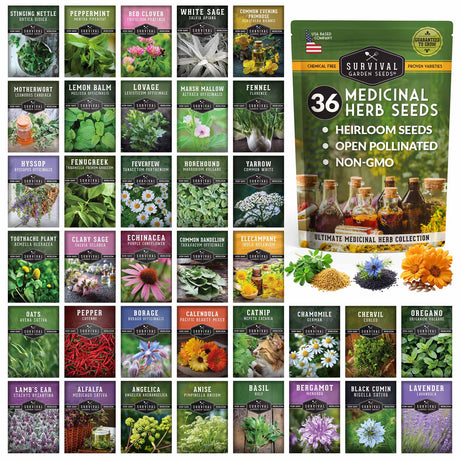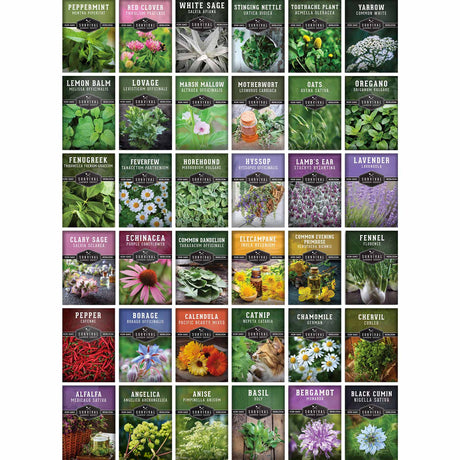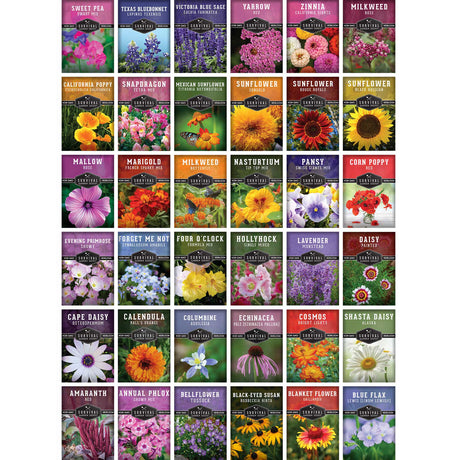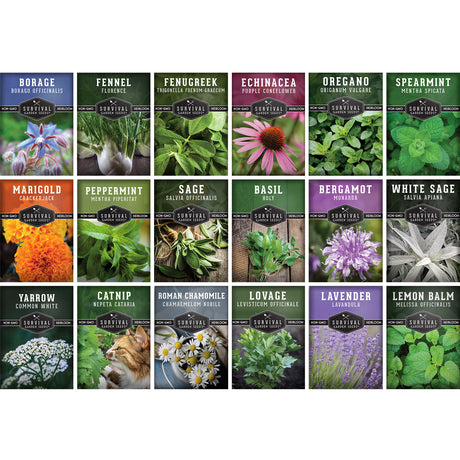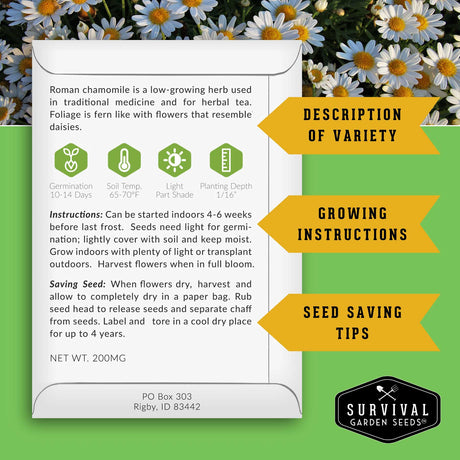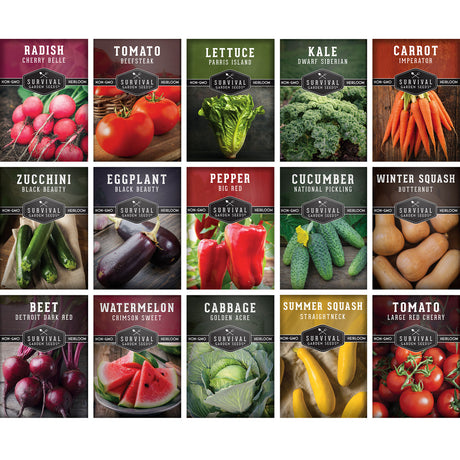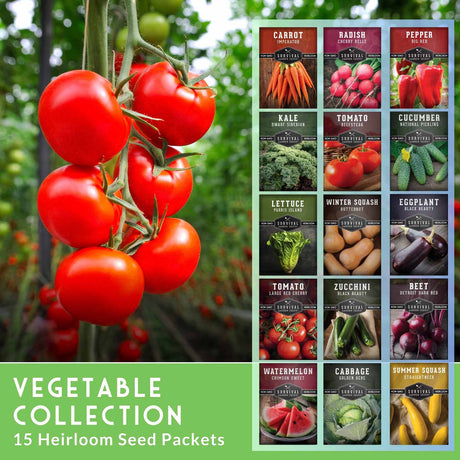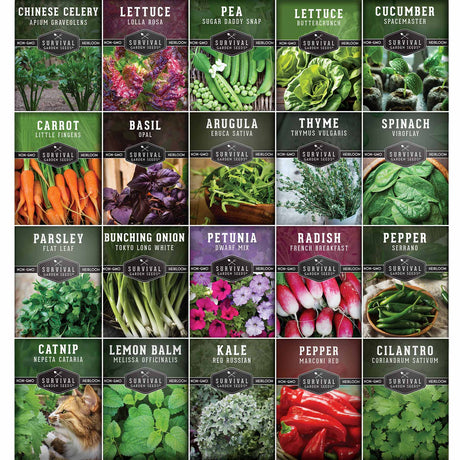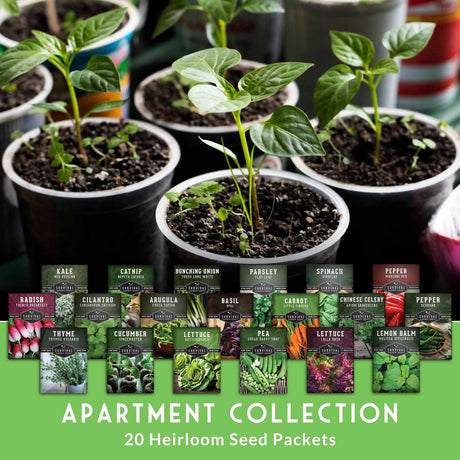The joy of growing juicy beefsteak tomatoes is an inspiration for the vegetable gardener. Just imagining the flavor of a fresh slice on your sandwiches is enough to make your mouth water. These giant, meaty tomatoes are hard to find at the grocery store because their size and shape make mechanical harvesting difficult. By growing these impressive tomatoes at home, you can enjoy the unmatched flavor of fresh from your own garden. In this guide, we’ll cover the essentials for all tomatoes, plus specific tips for growing beefsteak tomatoes and the special care they need.
What Makes a Beefsteak Tomato Different?
Beefsteak tomatoes are large slicing tomatoes with a rich, meaty texture. This means they take longer to grow and mature than smaller varieties, so you’ll need to have some patience with the growing process! Beefsteaks are typically indeterminate, meaning they continue to grow and produce fruits until the weather gets cold. The plants can get very tall, so they’ll require some extra maintenance like pruning, support, and training the plants to grow along the support, which we’ll discuss later.
Popular Beefsteak Varieties
There are some amazing choices to grow. Here are few of our favorites:
- Aunt Ruby's German Green: Yellowish green with a sweet, tangy flavor
- Beefsteak: The classic large red slicing tomato with widespread appeal
- Black Krim: An heirloom from the Crimean peninsula with a rich, slightly salty flavor
- Brandywine Red: An Amish heirloom with old-fashioned flavor and low acidity
- Cherokee Purple: One of the most popular heirloom tomatoes, loved for its rich, smoky flavor
- Cherokee Green: A green offshoot of the Cherokee Purple with a complex, slightly spicy taste
- Great White: Creamy white or light yellow with fruity, sweet flavor
- Hillbilly: Impressive yellow and red marbling and sweet fruitiness without a lot of acidity
- Mortgage Lifter: Huge fruits, reliable harvests and a sweet, rich flavor
- Pink Oxheart: Pink to red tomatoes with dense, meaty flesh and very few seeds
The Basics of Starting Tomatoes from Seed
Once you’ve decided which tomatoes you want to grow, start your seeds indoors. The ideal time is 6-8 weeks before your last frost date, but as soon as possible is the next best option. You’ll want plenty of time for your tomato plants to develop. As you start, a quick bit of advice: always label your seeds clearly so you know what you’ve planted. It’s very common for gardeners to forget and get mixed up. Don’t trust your memory!
You’ll need some seed starting mix, a seed starting tray or containers with soil that’s loosely packed. Plant the seeds about ¼ inch deep and keep the soil moist but not waterlogged. You can mist the top of the soil to just moisten, and use bottom watering to avoid disturbing the seeds. Tomatoes like heat, so a heat mat to keep the soil at least 75°F or more helps boost germination. Provide a lot of light for growing, preferably 12 hours or more. Here’s our earlier tomato seed starting guide with a video on this stage.
Transplanting Seedlings

Once your seedlings have their first set of true leaves, gently pot them up into larger containers, burying the stems deeper to encourage a robust root system. Before transplanting outdoors, you’ll need to get your seedlings ready for outdoor life. Harden them off by gradually exposing them to outdoor conditions over the course of a week or so. Wait until after the last frost and make sure the soil is warm because cold soil can stunt tomatoes’ growth. Pinch off all but the top leaves, then bury the plant deeply, covering a good portion of the stem with soil so more roots can develop to support the plant.
Choosing the Right Spot for Beefsteak Tomatoes
All tomatoes love the sun, and beefsteaks especially benefit from at least 8 hours of strong light a day. You’ll want to plan for adding trellises or other vertical support as well as room to care for your plants and harvest. Make sure there’s plenty of room between your seedlings: 3 to 4 feet allows plenty of space for airflow and maintenance. These tomato plants are fairly top-heavy, so you may need to provide shelter from strong winds, as well.
Beefsteaks thrive in fertile, well-draining soil, so don’t choose a spot that gets waterlogged or is heavily compacted. Compost, worm castings, or aged manure can boost your soil’s fertility. A balanced organic fertilizer can help get your young transplants off to a good start.
Caring for Beefsteak Tomato Plants
Once your plants are in their new home, the fun begins! Ongoing care will help ensure big harvests of flavorful fruits.
Watering
For juicy tomatoes, you need lots of water. Water deeply. Consistent watering during flowering and fruit development helps prevent blossom end rot. Avoid wetting the leaves by using drip irrigation or soaker hoses. This helps to reduce disease risk.
Mulch

Apply mulch around the base of your plants to protect the soil, keep weeds at bay, conserve water, and add nutrients to the soil. Dried leaves, straw, compost, bark chips, or dried grass clippings are all good choices.
Support
As mentioned earlier, beefsteak plants are fairly top heavy. There are many options for supporting tomatoes, including tomato cages, sturdy stakes, trellises, and string systems. These support structures help reduce stress on the stems as the fruit develops and make harvesting much simpler.
Pruning and Airflow
Good airflow reduces disease risk, and unnecessary leaves and branches can impede that airflow. Removing leaves at the soil level and suckers that appear between the main stem and branches helps promote better airflow. Our article on pruning tomatoes goes into more detail on how to prune your tomatoes for best results.
Weed Management
Mulch helps, sometimes weeds happen. Do your best to stay on top of weeding, because these uninvited plants can spread disease and compete for water and nutrients.
Fertilizer
Tomatoes are heavy feeders and require a lot of nutrients to produce a lot of juicy, tasty fruit. Organic fertilizers can help build healthier soil over time, but you’ll want to use different strategies at different times for best results. There are many pre-blended fertilizers specifically designed for tomatoes.
At planting
Soil amendments like compost, aged manure, bone meal, worm castings, and balanced tomato fertilizers can be worked into the soil before planting or added into the planting hole.
Early growth

A light top dressing of compost can support strong leafy growth. Yellowing leaves can point to nitrogen deficiency, so now is the best time to address this. As soon as flowers start to appear, it’s time to change things up.
Flowering and fruiting
Beefsteaks need extra phosphorus and potassium at this stage. Switch to fertilizers with a higher middle and last number in the Nitrogen Phosphorus Potassium (NPK) number, and apply as instructed on the label. Purplish leaves can point to phosphorus deficiency, while blossom end rot may be the result of calcium deficiency or inconsistent watering.
Pest & Disease Management
Keep an eye out for hornworms, aphids, and other pests that love tomatoes just as much as you do! You want to make sure you catch any issues before your plants are destroyed. Companion planting can help attract some beneficial insects that can help you in the battle against these pests.
Beefsteak tomatoes can also be prone to fungal problems like blight. Yearly crop rotation helps to prevent this. Maintaining good airflow and watering at the base of the plant will also help. If any plants show signs of disease, treat the plant immediately. Dispose of diseased leaves and debris promptly to prevent spread.
Harvesting Beefsteak Tomatoes
These large tomatoes take from 80 to 100 days after transplant to fully develop fruit. You’ll know when it’s time to pick. Fully ripened tomatoes have full, rich color and are firm, but slightly soft. Handle carefully, as these large tomatoes can bruise easily.

Many gardeners prefer to pick tomatoes a little bit early and allow them to ripen indoors. This can help prevent cracking in the final stages of ripening. It also keeps your harvest safe from wildlife that may be eyeing your tomatoes.
Storing Beefsteak Tomatoes
After you’ve done all this work, please don’t make the fatal mistake of storing your homegrown tomatoes in the refrigerator! Store them at room temperature to preserve their wonderful fresh flavor and tender texture. If you find yourself with more tomatoes than you can eat, consider canning, freezing, or making homemade sauces and salsas to enjoy later.
Growing beefsteak tomatoes is incredibly rewarding for gardeners of all experience levels. While it takes patience and attention to detail, following these tips will set you up for success. If you’re ready to get started growing your own, head to the seed shop! Explore our wide selection of beefsteak tomato seeds to find the perfect varieties to add to your garden.


